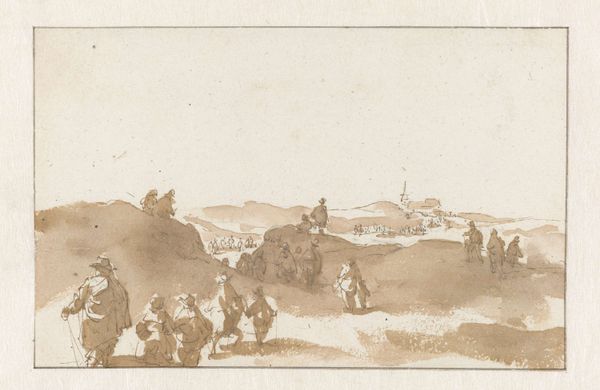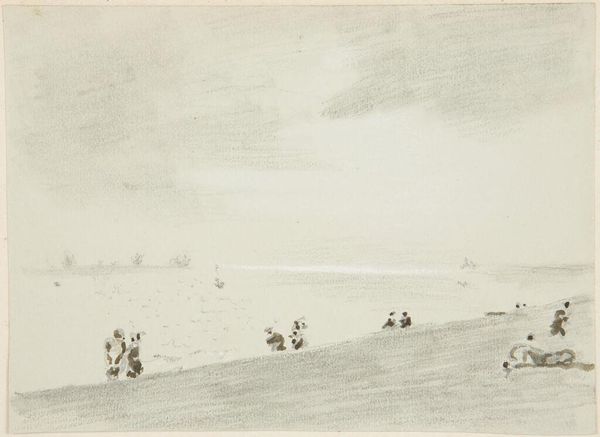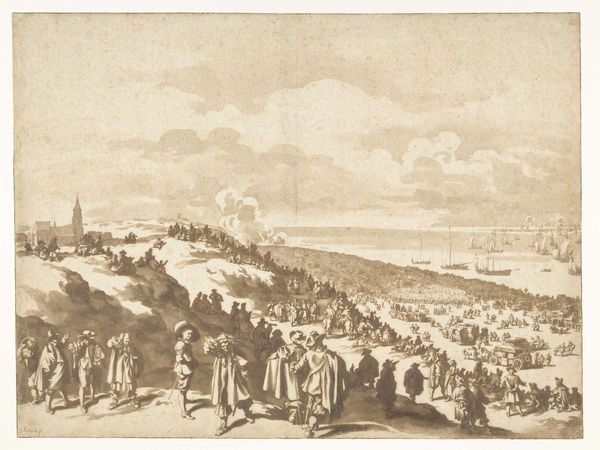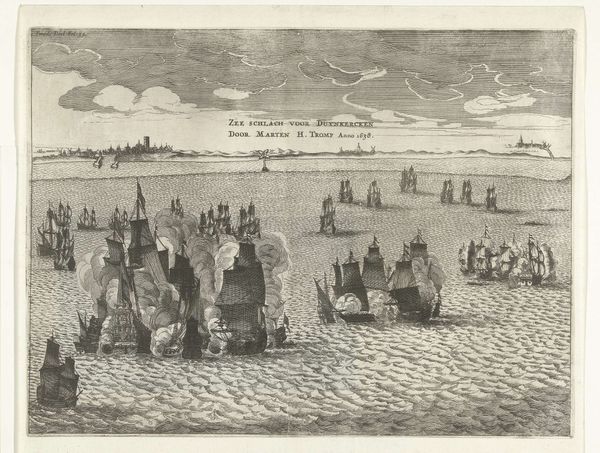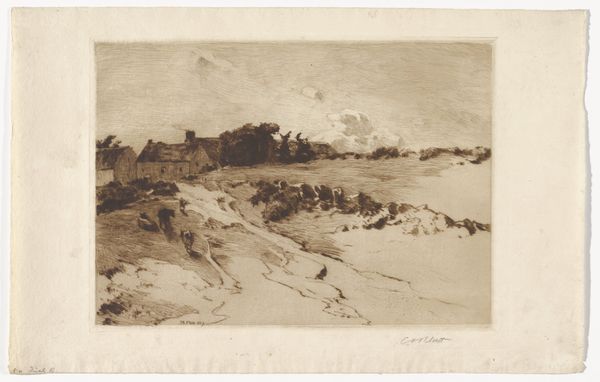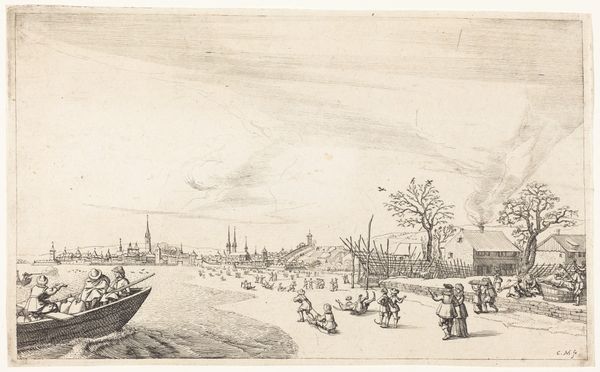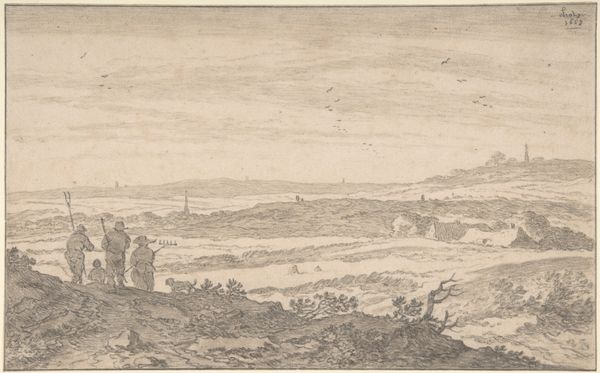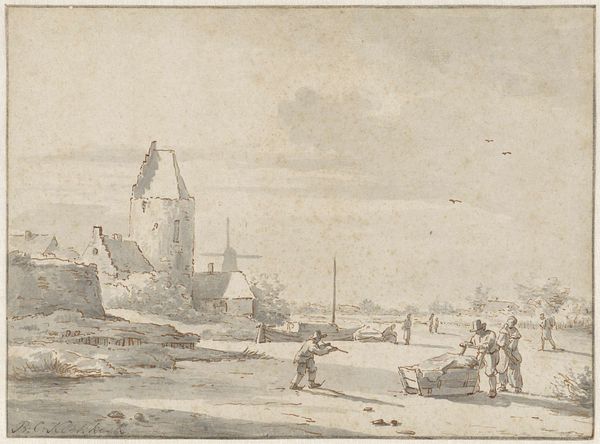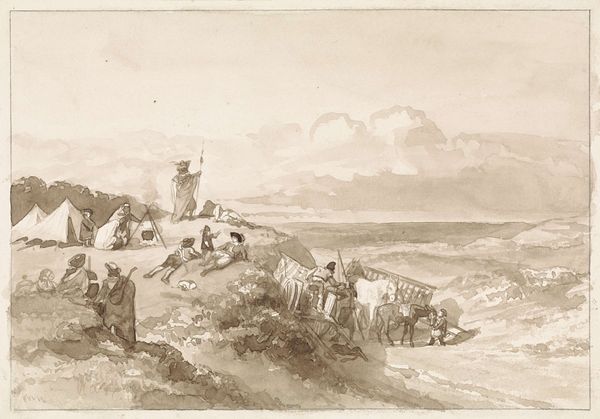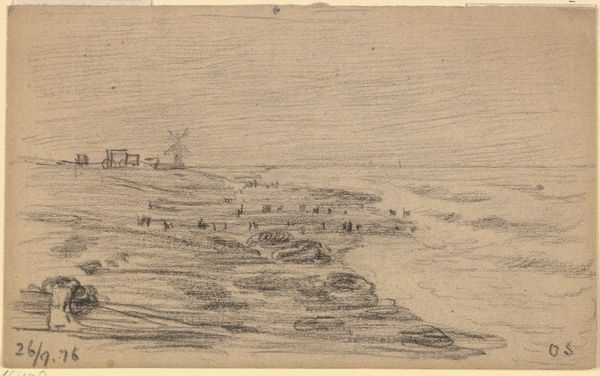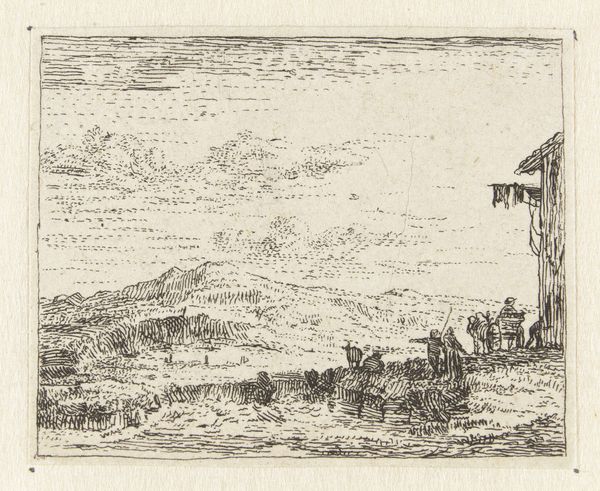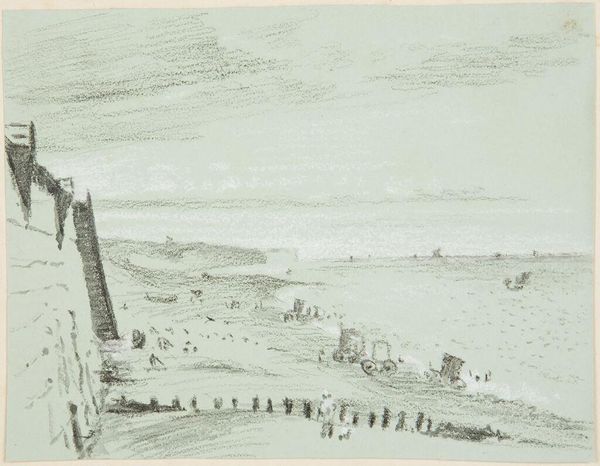
Two Sketches of Figures on the Dunes near Scheveningen Possibly 1660 - 1666
0:00
0:00
drawing, paper, ink, pencil
#
drawing
#
dutch-golden-age
#
pencil sketch
#
landscape
#
paper
#
ink
#
pencil
#
watercolour illustration
#
genre-painting
Dimensions: height 94 mm, width 153 mm
Copyright: Rijks Museum: Open Domain
Editor: This is Jan de Bisschop’s "Two Sketches of Figures on the Dunes near Scheveningen," dating back to the 1660s. It’s done with pencil and ink on paper. What strikes me is the stark landscape; it feels almost theatrical. What do you make of it? Curator: The theatre you perceive isn't accidental, I believe. Look at how Bisschop employs stark, almost barren scenery, with the figures placed like actors on a stage. But notice, too, the symbolism inherent in dunes: liminal spaces, boundaries between land and sea. How does this liminality resonate with you? Editor: It's like they are between worlds... or mindsets. The figures themselves, their anonymity almost, reinforces that. They seem to be searching for something. Curator: Precisely. Consider Scheveningen's role. It wasn't merely a physical location but also a recurring motif in Dutch Golden Age art, signifying a collective identity. The costumes, barely sketched, speak to broader societal classes converging in this shared space. It reflects a young mercantile nation negotiating its identity. What emotions arise when you imagine them? Editor: A sense of quiet anticipation... maybe hope mixed with a touch of melancholy? Curator: I agree. Bisschop, through these deliberate strokes and spatial arrangements, seems to capture the psyche of a culture in transition, seeking to define itself against the backdrop of an ever-changing world. Art becomes memory, a repository of shared feelings, beliefs, and dreams of a culture. Editor: That’s fascinating. I never considered how deeply place and clothing could evoke so much about cultural identity. Thanks for shedding light on this artwork’s cultural weight. Curator: Indeed! Looking closer at even simple forms will unravel more symbolic understanding for us all.
Comments
rijksmuseum about 2 years ago
⋮
De Bisschop covered Charles II’s departure to England like a news reporter. He recorded the momentous event in swiftly executed sketches in black chalk, which he later worked up in pen and brush. These sketches served as the foundation for the large finished drawing also on view here (adjacent).
Join the conversation
Join millions of artists and users on Artera today and experience the ultimate creative platform.
